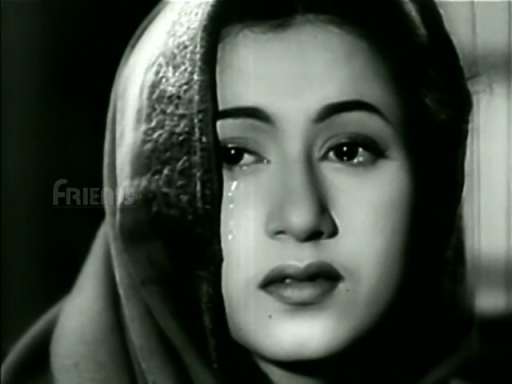Mahal
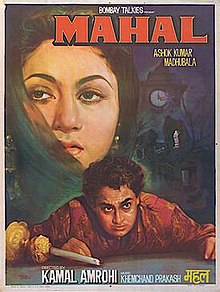
Director: Kamaal Amrohi
Year: 1949
Music: Khemchand Prakash
Duration: 165 minutes
Rating: 9.0
Aka - Mansion
There is a tale that is told, usually late
at night as the wind blows and quiet and shadows envelop the listeners
- told in hushed tones of an unrequited love and rebirth. In the city of
Allahabad along the banks of the Jamuna river there lies an abandoned mansion
of great beauty, slowly decaying in its opulence, fully furnished as if waiting
for someone to come home. From the dead. Years ago a man built this house
high on a hillside for the woman he loved, her name was Kamini and he would
come to her every midnight and then leave by morning. One day he stopped
coming when he drowned in the river. But over the roar of the storm he yelled
to her that she had to wait for him, that he would return. In the next life
if need be. She wept but went in search for him along the river until she
too was caught in a storm and pulled in to the water to share his fate. The
tale continues that on stormy nights a small boat pulls up to the shore and
a woman gets out and goes into the mansion and sings for her lover to return.
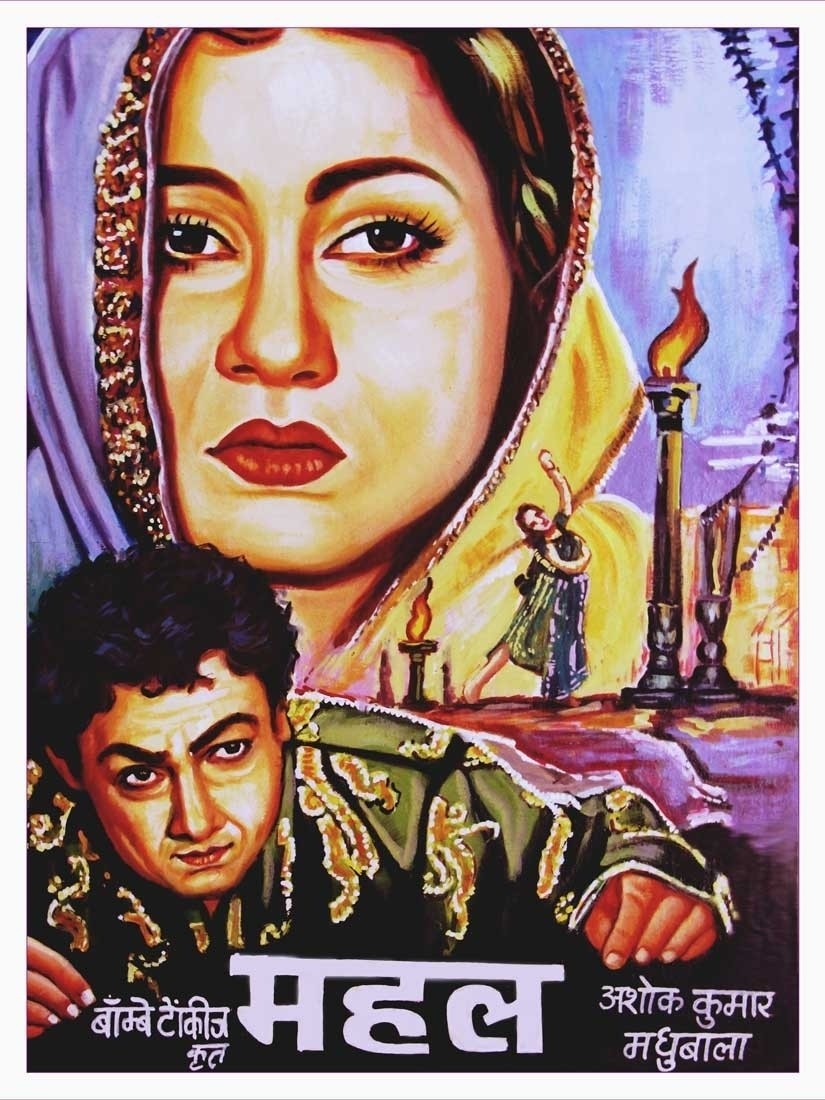
This is a remarkable film for a number
of reasons - the film itself but also for the careers that it gave a jump
start to. Mahal is visually a treat of light and darkness, poetic, atmospheric,
a slow hypnotic drumbeat that moves ever so slowly forward, drenched in fatalism
and obsession driven by music and songs that are full of melancholy and despair.
Heartbreaking and spiritual. Searching for love, searching for escape, searching
for redemption. It is a beautiful black and white film with simply masterful
camera work (Josef Wirsching) and set designs. Every shot is thought out
and every scene has its own life. In a way it reminds me of Citizen Kane
- not the story but how it reshaped Bollywood cinema into something that
was more artistic, contemporary and serious - through the 1940's the majority
of Bollywood films were period, religious and historical stories with a smattering
of comedies - but this began a Renaissance that flowered in the 1950s. It
was the debut of director Kamaal Amrohi who clearly had a vision for this
film. He was able to get the backing of one of the biggest male stars of
the time, Ashok Kumar, who had in the 1940's reinvented the hero - from a
bombastic character to someone more complex, thoughtful and toned down. After
a long search for the female protagonist in the film, they settled on an
actress who was only 16 and not that well known - the great Madhubala.
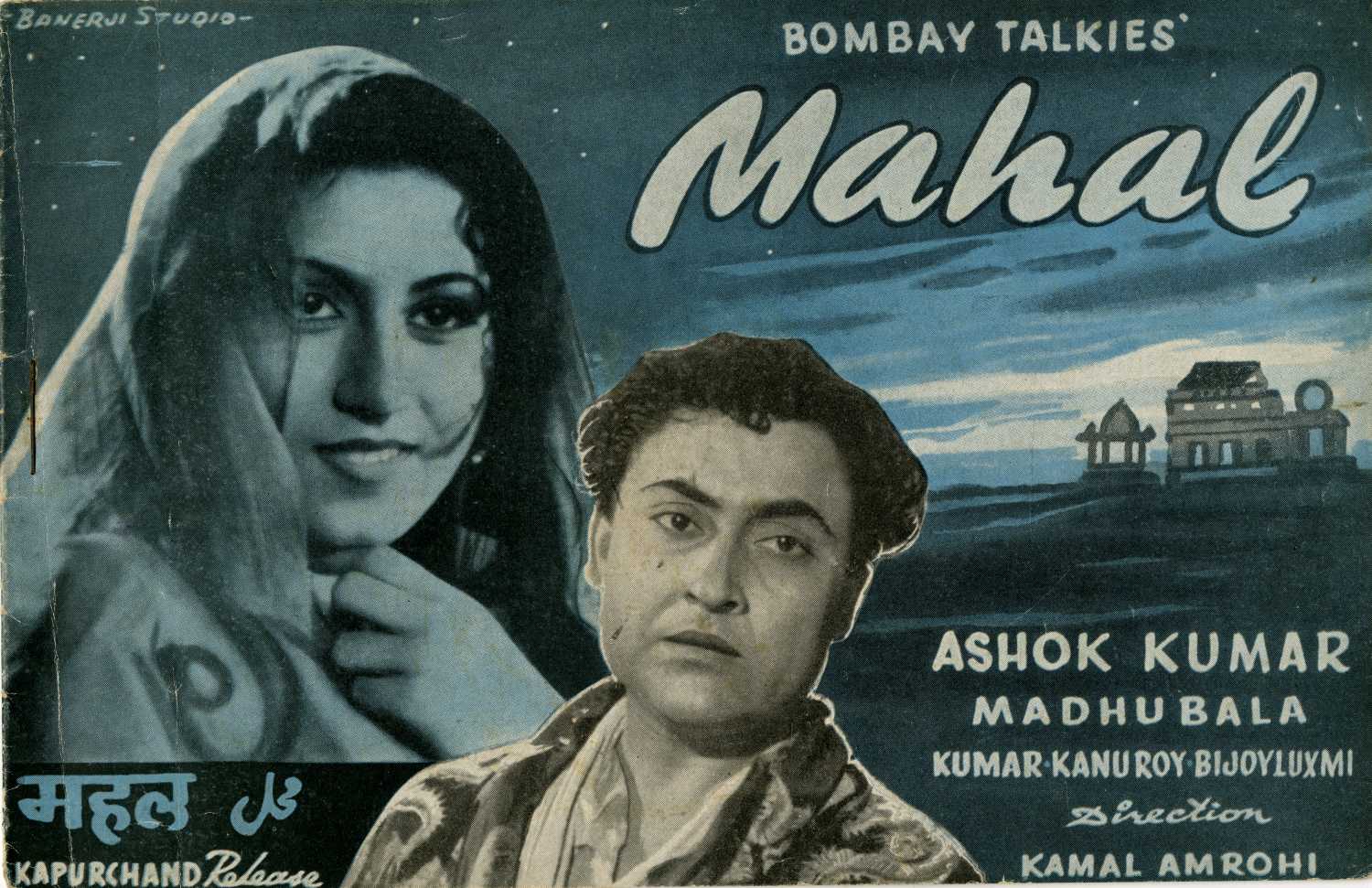
Madhubala had actually been around at that
young age for a few years. She was born in 1933 with the name Mumtaz Jehan.
Her father with a brood of children and no job left New Delhi and moved to
Bombay in hopes that his prettiest daughter could get into film and support
the family. Something she was to do all her too short life. She got a role
in the 1942 Basant and was credited as Baby Mumtaz. In 1946 at the age of
14 she played her first heroine in Neel Kamal and soon after received the
stage name of Madhubala (honey belle). A few other films followed but it
was Mahal that sent her into the stratosphere from which she never fell in
terms of popularity. Her personal life sadly never tracked her film career.
Like this film it was full of tragic unrequited love. In truth, Madhubala
doesn't have that much screen time and even less dialogue but she is what
you remember when the film is over. She is haunting. There is one scene that
accentuated her beauty and mystery - a man is going on and on in a conversation
but the camera ignores him and simply focuses on a close-up of her face for
a few minutes as emotions wash through her and a single tear falls from her
face. It is breathtaking.
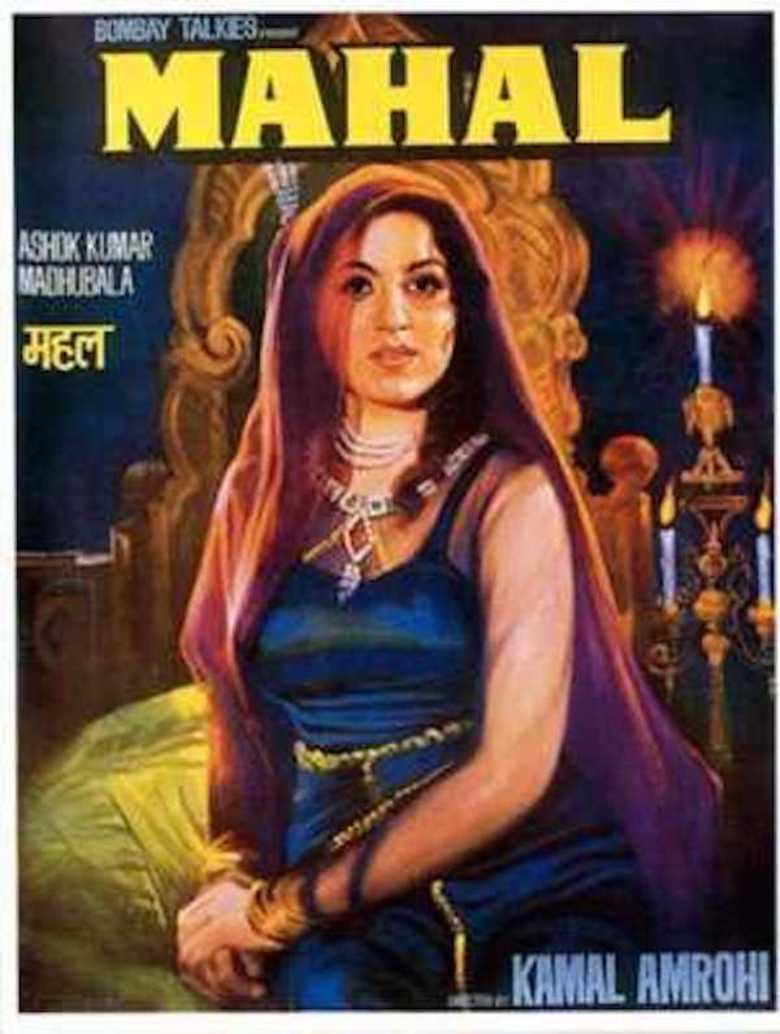
As to the plot. Shankar (Ashok Kumar) buys
the mansion in an auction though it is thought to be haunted. In his first
night there the gardener tells him of the legend of the house. Later wandering
around he comes across a portrait - of the builder of the house - it looks
just like him. Then he hears singing - a plaintive slow dirge that
makes its way through the house. He follows it to the outside where he sees
a woman in a veil singing who then disappears like a phantom when he approaches.
This hide and seek eerie happening continues to occur - he is going
mad with love, obsessed that he is the reincarnated man and this is his lost
love. A friend tries to take him away and when that doesn't work he has two
famous sister courtesans try and seduce him (a wonderful scene) but in his
mind he hears her singing. Finally one night Kamini comes to him - asks him
if he is willing to kill himself and join her - he assents and is ready to
throw himself off the cliff - but she changes her mind - bring me to life
by killing the daughter of the gardener. He agrees. And pulls out a
knife.
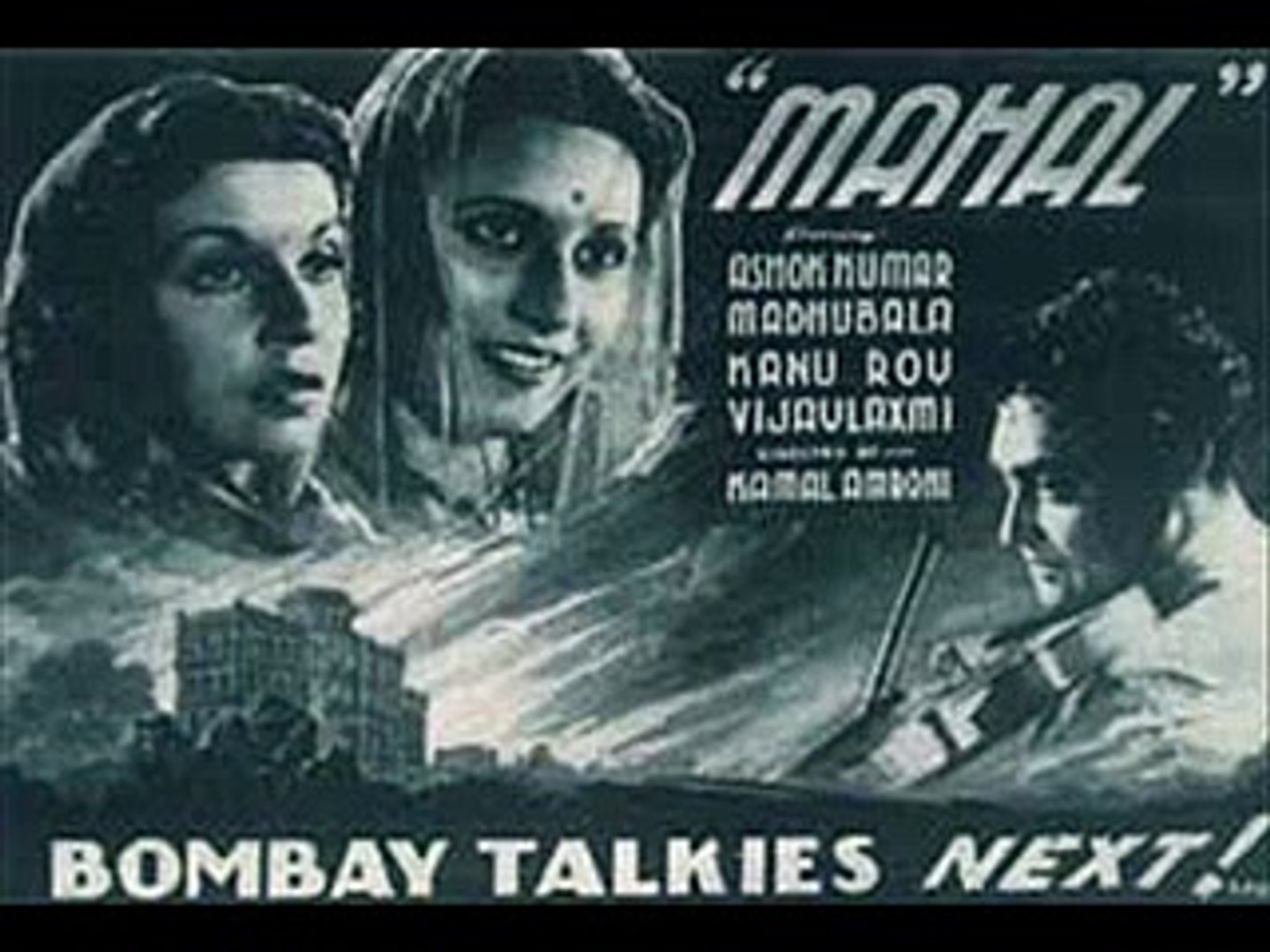
And a lot more to go. Again very slow and
moody. The music score gives everything a sense of drama and dread. There
is not a light moment introduced into the entire film. The music from Khemchand
Prakash is a mix of understated solemn ghostly tunes of sadness with poignant
tragic lyrics of love and death. The playback singer for Kamini is Lata Mangeshkar
and the popularity of the songs not only made her a star (she was to go on
to be the most famous female singer in Bollywood for decades), but also gave
prominence to the playback singers who until then were rarely credited. Now
her name was a selling point. The playback singer for another female character
(Vijayalaxmi) who shows up about halfway through is Rajkumari, who was already
known. There is one other scene that doesn't really fit in the narrative
of the film but was terrific. Shankar is running away from Kamini and his
madness when he comes upon a tribe that is trying a wife for adultery. Simple.
As she dances a holy man throws knives at her four times - if she is not
killed, she is innocent - if killed she is guilty and deserves to die.
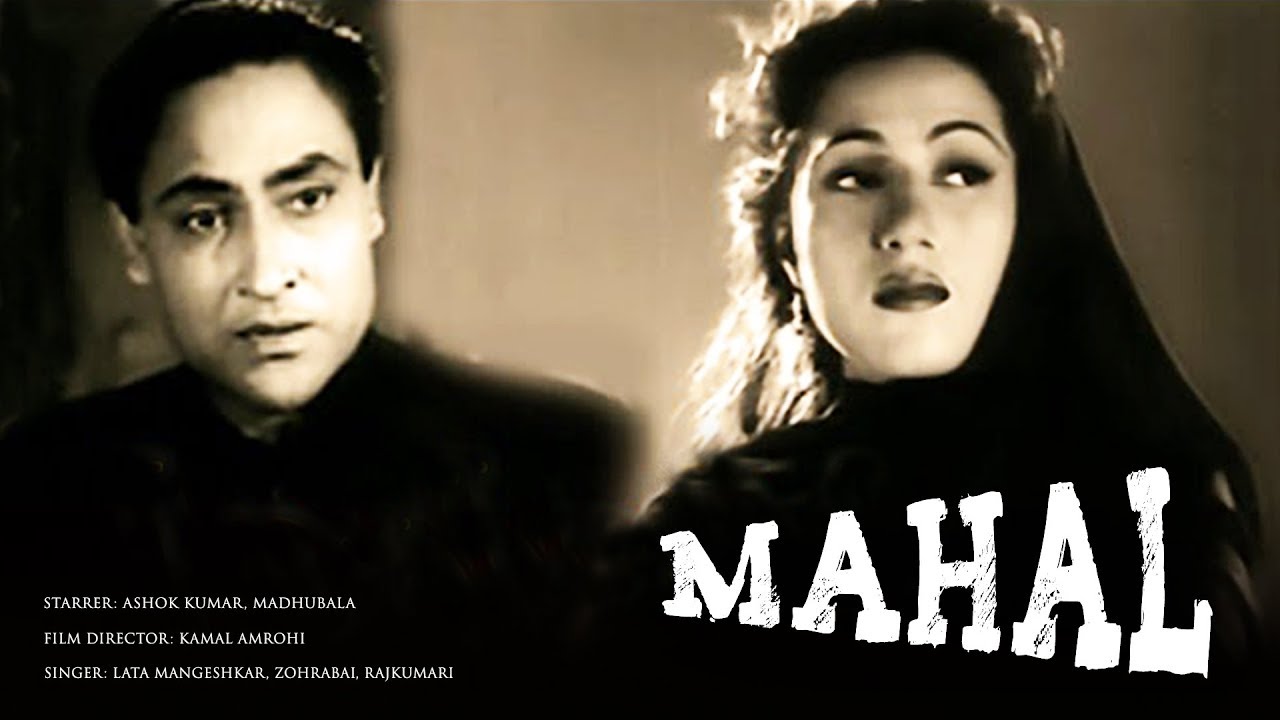
I think this is the oldest Bollywood film
I have seen and I thought it was amazing. But I would say you have to be
in the right mood for this film - very little actually happens over its 143
minutes - it is just a slow rhythmic hypnotic fatalistic march to the end.







